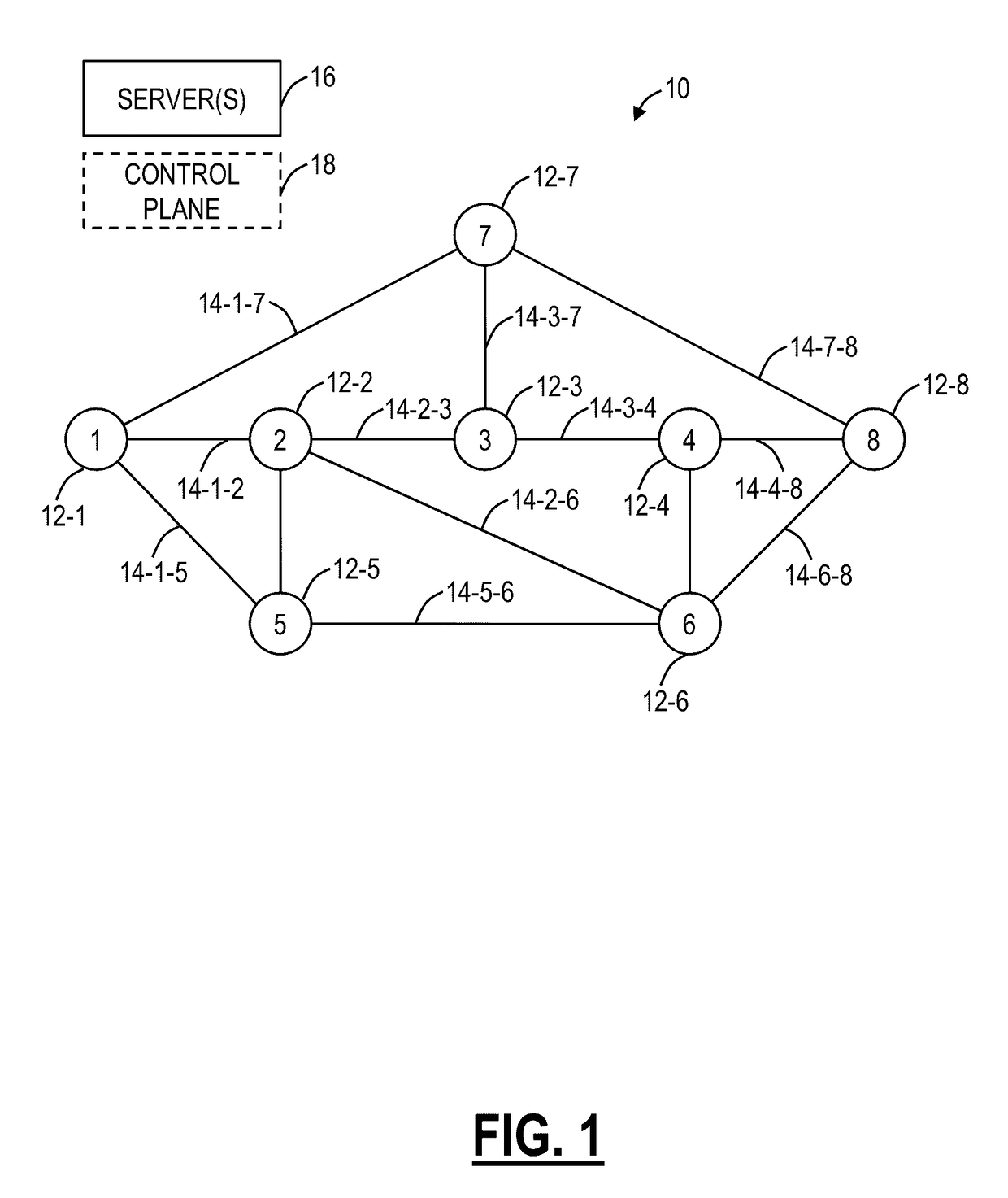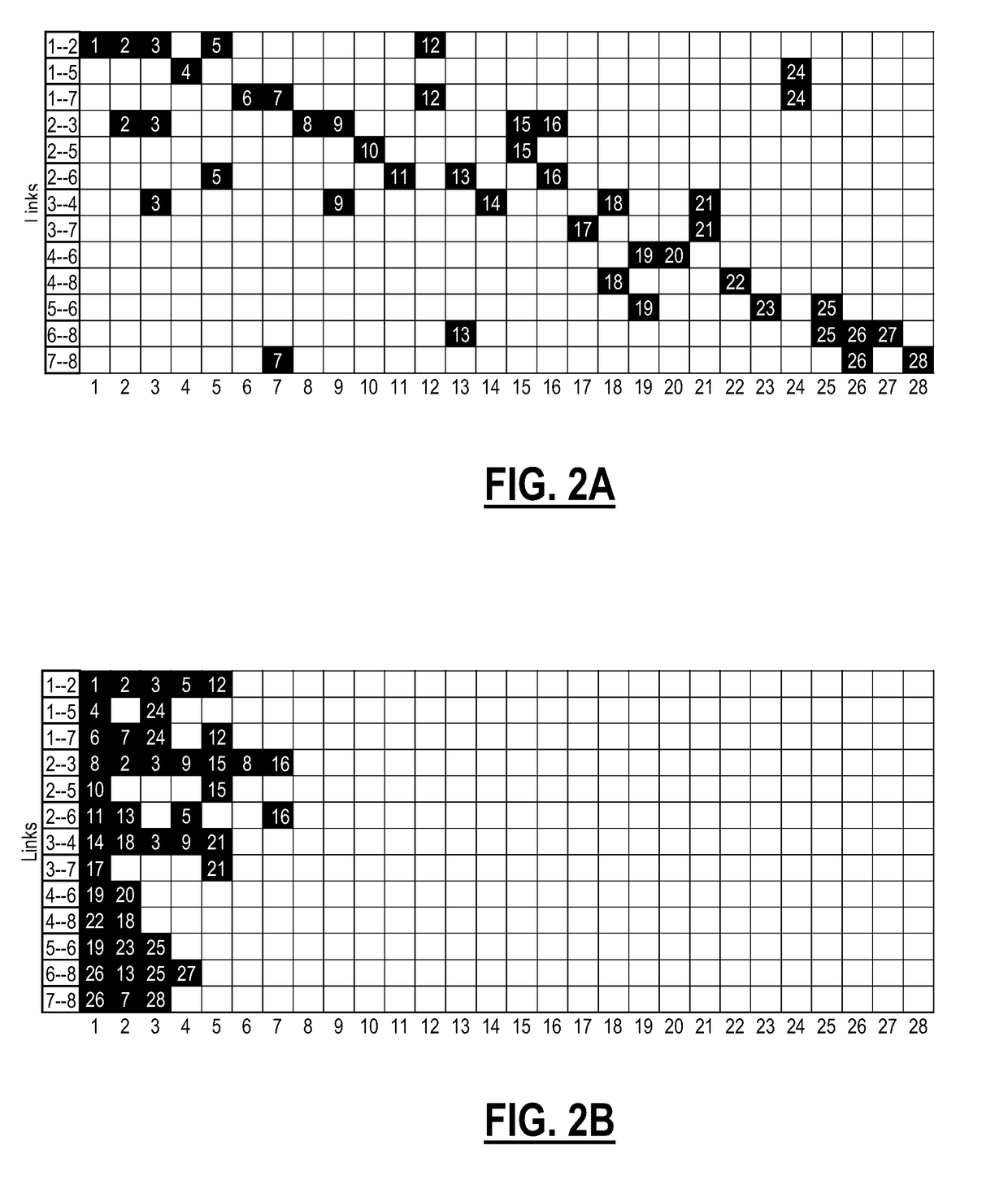Minimal spectrum occupancy systems and methods for routing and wavelength or spectrum assignment in optical networks
a technology of optical network and spectrum occupancy, applied in data switching networks, multiplex communication, digital transmission, etc., can solve the problems of slow and difficult transition from fixed grid to flexible grid, no or few complete solutions for rsa in the flexible grid domain, and may not be globally optimal
- Summary
- Abstract
- Description
- Claims
- Application Information
AI Technical Summary
Benefits of technology
Problems solved by technology
Method used
Image
Examples
Embodiment Construction
[0026]Again, in various exemplary embodiments, the present disclosure relates to minimal spectrum occupancy systems and methods for Routing and Wavelength Assignment (RWA) for fixed grid optical networks and Routing and Spectrum Assignment (RSA) for flexible grid optical networks. The systems and methods use a unique and different approach than any other traditional techniques of solving both routing and spectrum slots assignment. The systems and methods jointly solve the two RSA sub-problems; routing and spectrum slots assignment, by searching for all the possible combined solutions for every service request received in an optical network. Advantageously, the search is done by using simple Boolean operations.
[0027]The spectrum of an optical network with its associated link usage can be represented as a checkerboard of binary numbers that contains ones and zeroes. From this perspective, the spectrum of any arbitrary route also is represented by binary number or block of binary numbe...
PUM
 Login to View More
Login to View More Abstract
Description
Claims
Application Information
 Login to View More
Login to View More - R&D
- Intellectual Property
- Life Sciences
- Materials
- Tech Scout
- Unparalleled Data Quality
- Higher Quality Content
- 60% Fewer Hallucinations
Browse by: Latest US Patents, China's latest patents, Technical Efficacy Thesaurus, Application Domain, Technology Topic, Popular Technical Reports.
© 2025 PatSnap. All rights reserved.Legal|Privacy policy|Modern Slavery Act Transparency Statement|Sitemap|About US| Contact US: help@patsnap.com



